How To Become a Wildlife Filmmaker
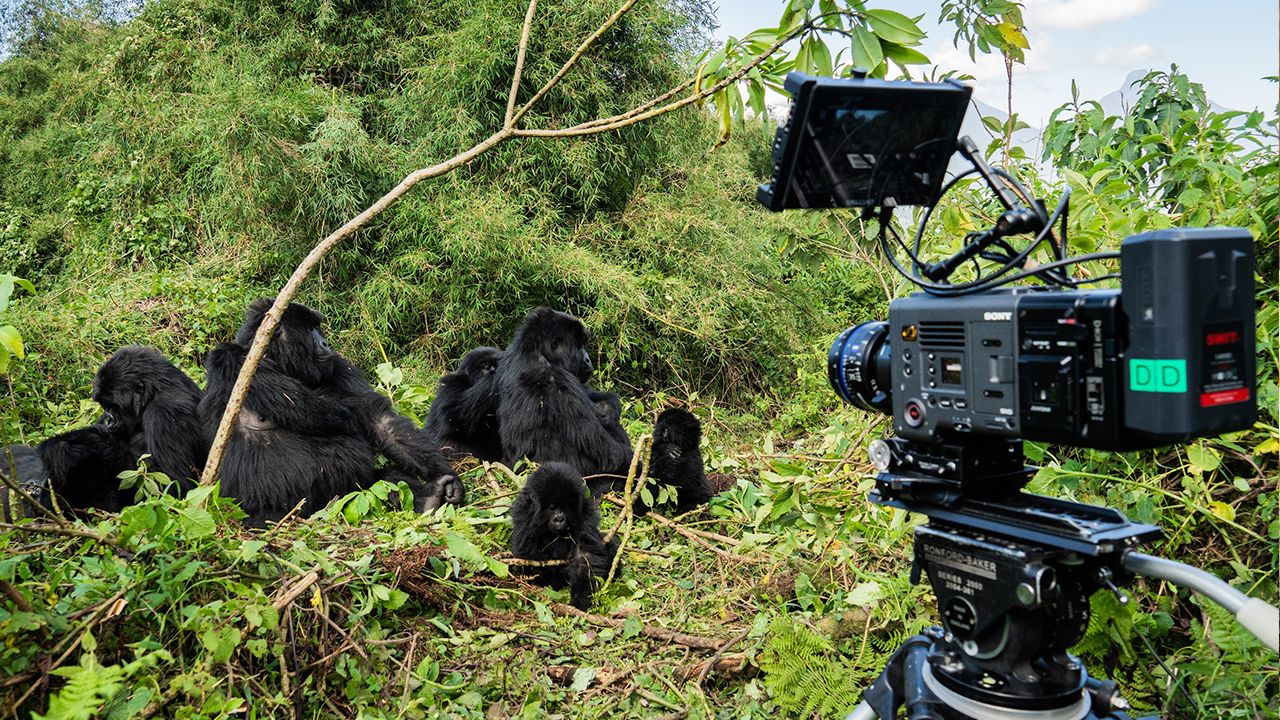
Are you captivated by the beauty of the natural world and itching to share it with others through the magic of film? If so, you're in the right place! Wildlife filmmaking, also known as natural history filmmaking is an incredible career choice that offers adventure, excitement, and the chance to bring the wonders of nature to life on screen. But how do you break into this competitive field and become a successful wildlife filmmaker? To help answer this question, I sat down with two talented wildlife filmmakers, Ava and Duncan; and asked for their advise on how to get started in wildlife filmmaking:
I've also put together a free wildlife filmmaking guide to help you get started as a wildlife filmmaker which you can get here: Free Wildlife Filmmaking Guide
In this blog, I'll dive into the different ways to enter the industry, essential skills and techniques to master, and insider tips for navigating the challenges of this exhilarating profession.
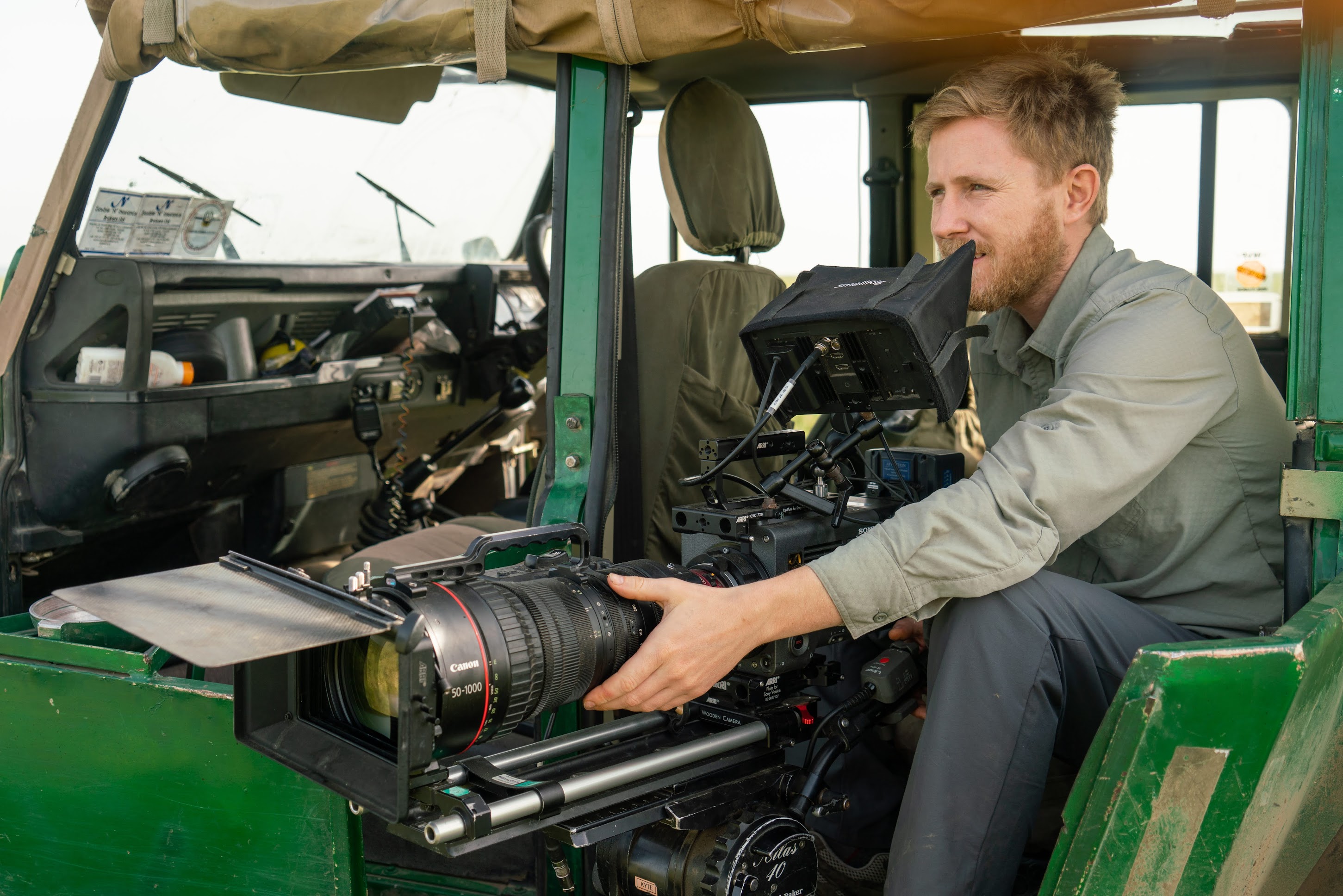
The Truth About Wildlife Filmmaking
But, let's be real - being a wildlife filmmaker isn't all glamour and breathtaking shots; it also involves long hours, isolation, and the unpredictable nature of freelancing. You'll need to be prepared for a one-of-a-kind lifestyle filled with logistical challenges and unexpected twists. However, if you can embrace these obstacles, you'll find yourself in a truly extraordinary career that lets you explore the natural world while sharing your passion with others.
Ready to turn your love for nature into an exciting and fulfilling career in wildlife filmmaking?
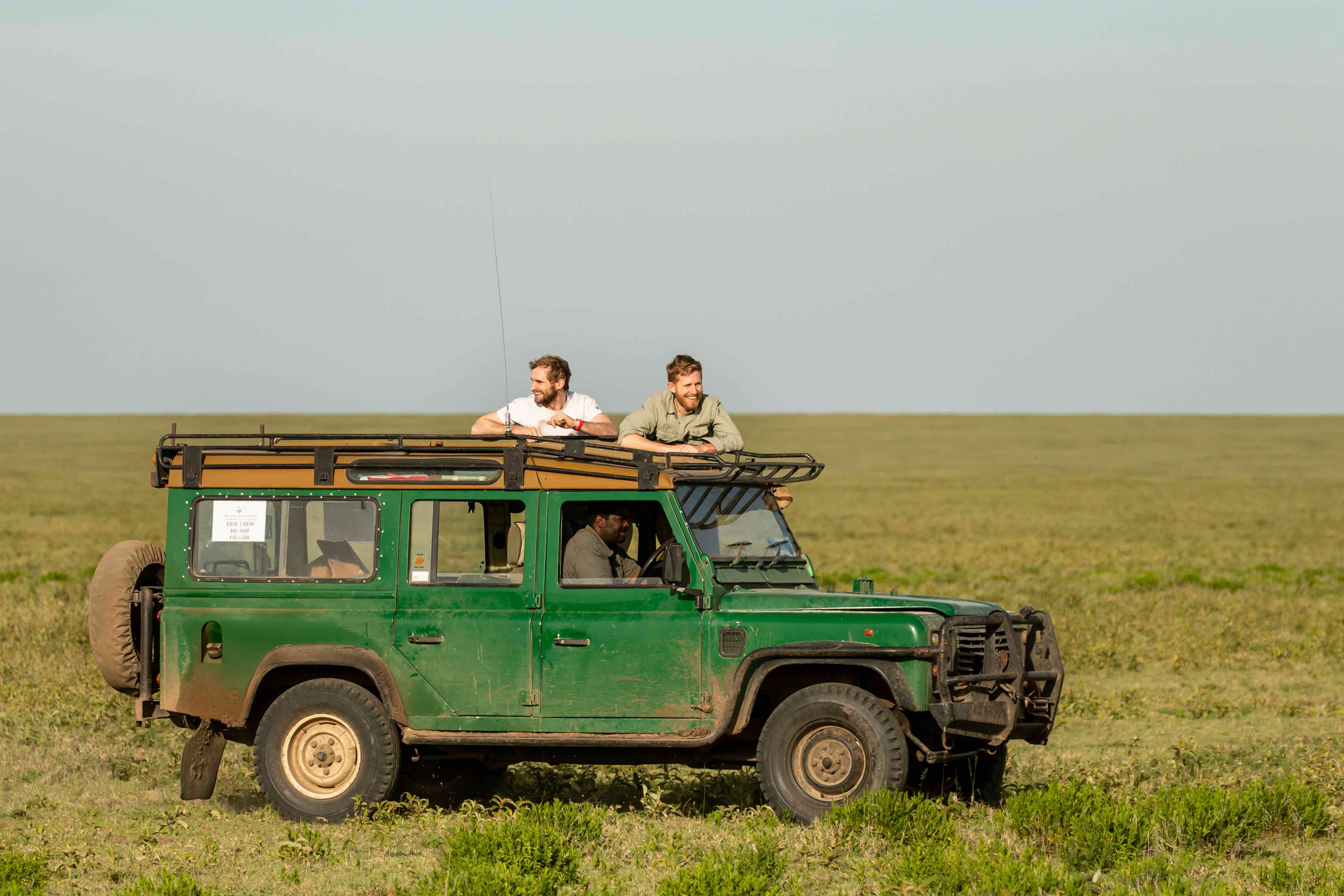
Start Wildlife Filmmaking: A Step-by-Step Guide
Join me as I share tips and tricks from my personal journey into the world of wildlife filmmaking, and share insights I wish I'd discovered when I first got started as a filmmaker.
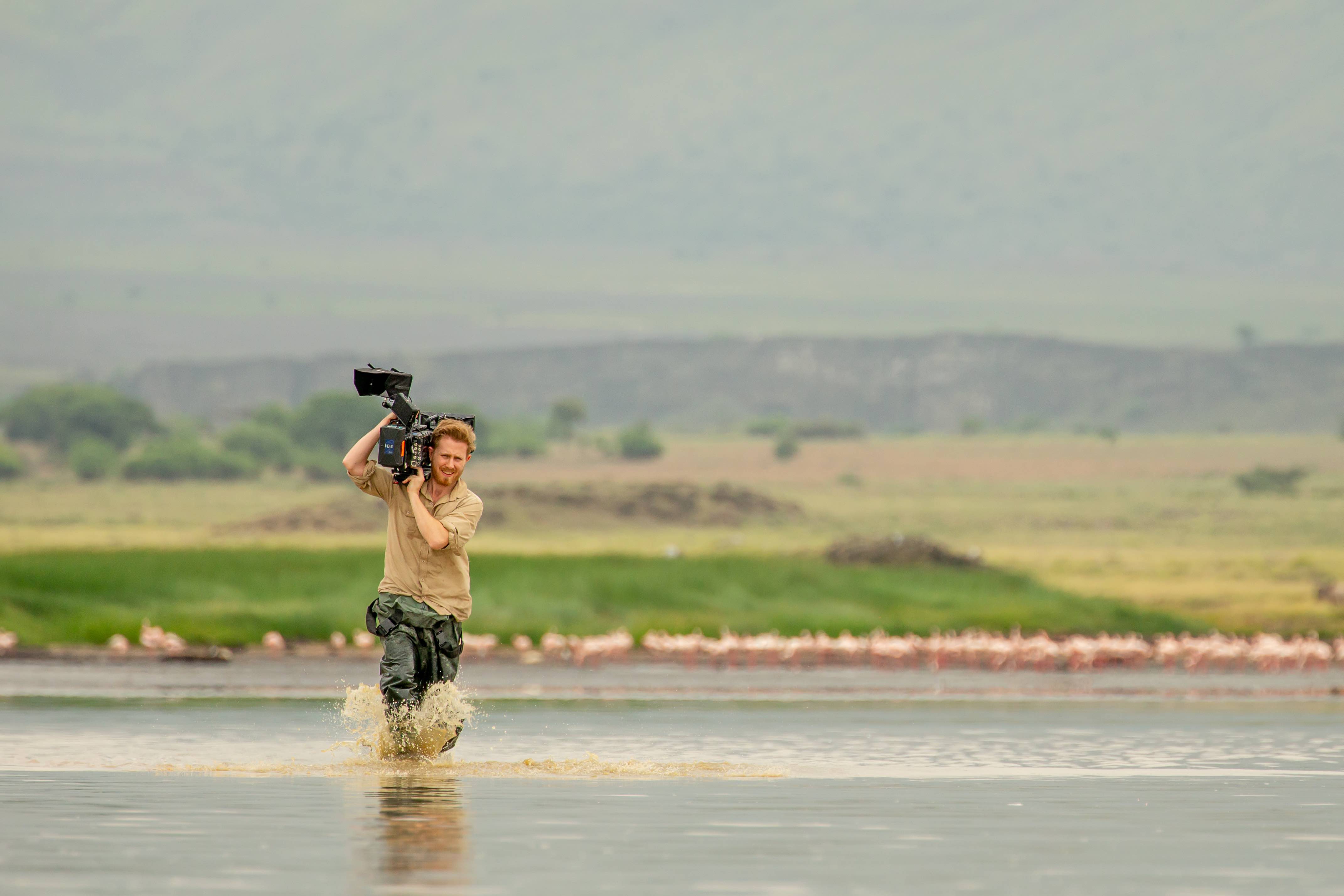
How To Become a Wildlife Filmmaker
1. Cultivate a strong interest in nature and wildlife
Before you start making wildlife films, it's essential to develop a solid understanding of the natural world. By immersing yourself in the study of wildlife, you'll be better equipped to tell captivating stories that resonate with your audience. Here's how to start building your foundation as a wildlife filmmaker:
- Read books: Dive into books about wildlife, ecology, and animal behavior. Familiarise yourself with different species, habitats, and conservation issues. Some great reads to start with include "The Hidden Life of Trees" by Peter Wohlleben, "Last Child in the Woods" by Richard Louv, and "King Solomon's Ring" by Konrad Lorenz.
- Watch documentaries and films: Analyse both classic and contemporary wildlife documentaries, such as "Planet Earth," "The Blue Planet," and "The Life Collection" by Sir David Attenborough. Observe the storytelling techniques, camera work, and editing styles that bring these stories to life.
- Talk to experts: Reach out to biologists, ecologists, park rangers, or wildlife photographers to gain insights into their work and experiences. Attend lectures, workshops, or webinars to learn from their expertise and expand your knowledge.
- Visit nature reserves, parks, and zoos: Explore diverse environments to observe and appreciate various species and ecosystems firsthand. Take notes, sketch, or photograph what you see to enhance your understanding of the natural world.
-
Join conservation organisations: Joining conservation organisations is a great way to immerse yourself in the world of wildlife filmmaking and gain practical experience. It allows you to build a network of like-minded individuals, engage in meaningful work, and learn about the latest conservation efforts. By volunteering or collaborating with these organisations, you can contribute to their mission while also gaining valuable skills and knowledge about the natural world. It can also provide inspiration for potential films that you could make when you get to step 2.
-
Pursue relevant education (biology or zoology): Pursuing relevant education in biology or zoology can provide a solid foundation of knowledge about the natural world, which is critical for producing meaningful and informed wildlife documentaries. By pursuing relevant education in biology or zoology, aspiring wildlife filmmakers can gain a deeper understanding of the natural world, allowing them to create more impactful, engaging, and responsible films.

2. Pick up a Camera and Start Filming Wildlife
The best way to get good at making wildlife films is by getting out there and filming with whatever equipment you’ve got available to you – even if it's just a smartphone or a buddy's mirrorless camera. Play around with camera angles, framing, and lighting to start finding your own unique documentary style.
You don't have to travel to the ends of the Earth to make an amazing wildlife film. There's a whole world of wildlife to discover right in your own backyard, at the park down the street, or at a nearby nature reserve. Keep an eye out for all sorts of creatures like birds, squirrels, or bees, and find something that sparks your interest. Hit the record button and dive into the fascinating world of animal and insect behavior. Not only will you sharpen your filmmaking skills, but you'll also connect with nature on a deeper level.
Remember, practice makes perfect! Keep filming everyday, stay curious, and be open to new ideas. Before you know it, you'll be well on your way to becoming a wildlife filmmaker.

3. Build Your Wildlife Filmmaking Portfolio
Once you’ve made a few wildlife films in your local area you’re ready to start to building a portfolio which is essential for showcasing your abilities as a wildlife filmmaker and attracting potential employers, clients, and collaborators.
Here's how to create an impressive portfolio:
- Begin by selecting your best work, including a variety of projects that demonstrate your skills in a specific area of filmmaking, such as producing or cinematography. Choose pieces that showcase your ability to capture compelling wildlife footage, your understanding of animal behavior, and your unique vision as a filmmaker.
- Compile a short, engaging showreel that highlights your best work and demonstrates your key skills as a wildlife filmmaker. Aim for a length of 2-3 minutes, showcasing diverse footage from different projects. Use this showreel as an introduction to your portfolio when approaching potential employers, clients, or collaborators.
- Present your projects in a clear and organised manner on your website (you can use websites like Vimeo or Square Space to create these sites). Include information about each project, such as the title, location, production role(s), equipment used, and a brief description. Make sure your contact information is easily accessible and up-to-date.
- Emphasise the aspects of your work that set you apart from other filmmakers. This could include your expertise in a specific filming technique (such as macro, underwater, long lens, or camera traps), your ability to capture rare animal behavior, or your talent for weaving engaging narratives around environmental issues.
As you continue to work on new projects and develop your skills, be sure to update your portfolio with your latest and best work. This will demonstrate your growth as a filmmaker and keep your portfolio fresh and relevant.
Request feedback on your portfolio from mentors, peers, or industry professionals to ensure it effectively showcases your skills and potential. Use this feedback to refine your portfolio and make it even more compelling.
By building a strong, diverse, and well-organised portfolio, you can effectively showcase your skills, experience, and unique perspective as a wildlife filmmaker. This will help you stand out in the competitive industry and attract exciting opportunities for collaboration, employment, and funding.
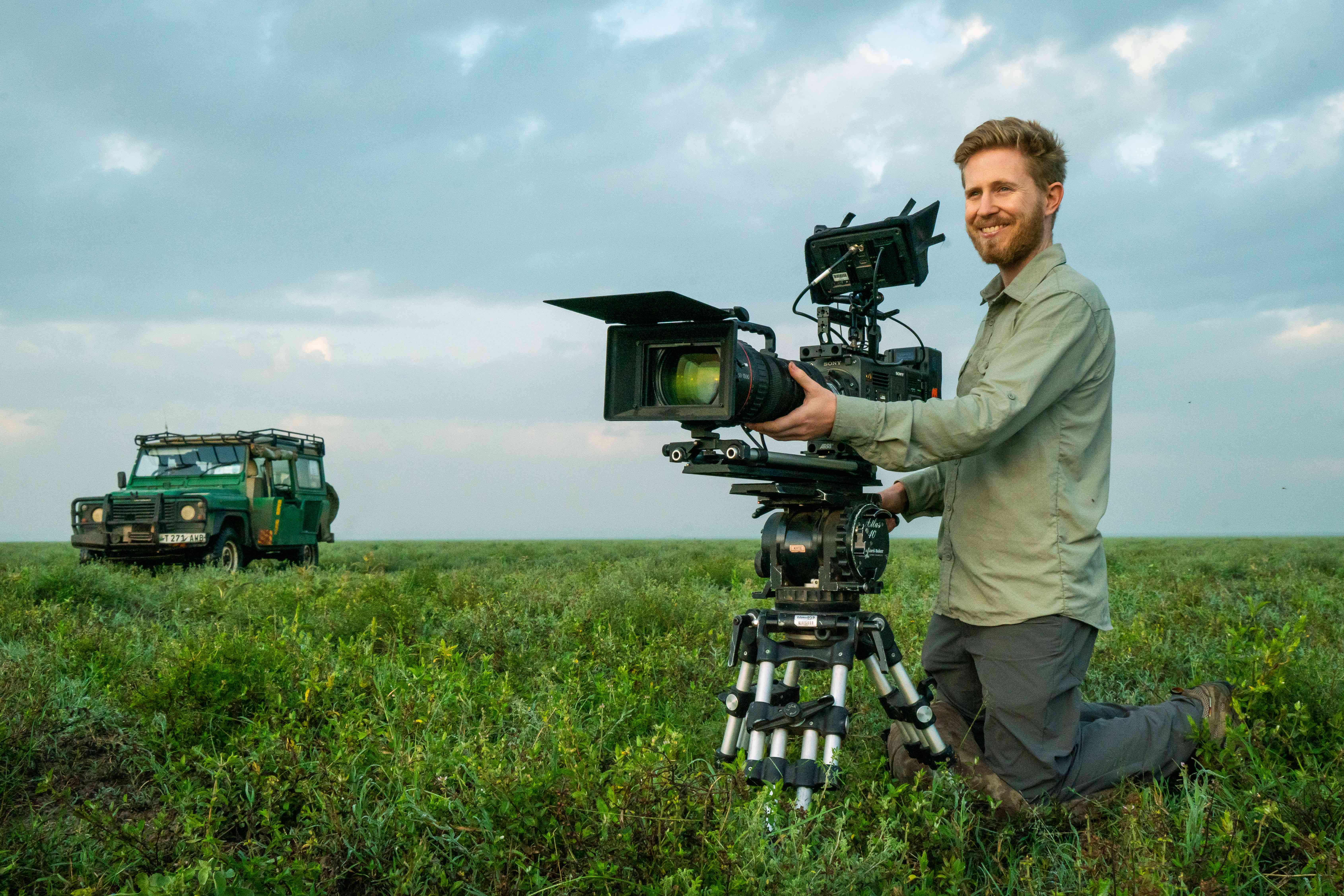
4. Get Work Experience in Filmmaking and Wildlife
Now that you have a bit of experience under your belt from filming your own projects. Applying for internships with production companies, broadcasters, or organisations specialising in wildlife or environmental documentaries can provide invaluable on-the-job training and the opportunity to work alongside industry professionals. Internships also offer a chance to network with potential collaborators or employers.
Volunteering with conservation organisations, wildlife rehabilitation centers, or research institutions that require video documentation or promotional materials allows you to gain real-world experience while contributing to a meaningful cause. This can also lead to potential job opportunities or connections in the industry.
Pursuing entry-level positions in the film industry, such as a production assistant or camera assistant, will help you develop your technical skills, learn the ins and outs of filming on location, and gain a better understanding of the filmmaking process.
Participating in wildlife filmmaking workshops or field courses that offer hands-on training and practical experience can be beneficial. These programs often include opportunities to film in diverse locations, learn from experts, and collaborate with other aspiring filmmakers.
By gaining practical experience through internships, volunteering, and workshops, you will not only enhance your skills but also demonstrate your dedication and commitment to the field of wildlife filmmaking. This hands-on collaboration will be invaluable as you pursue your career and work on larger, more complex projects.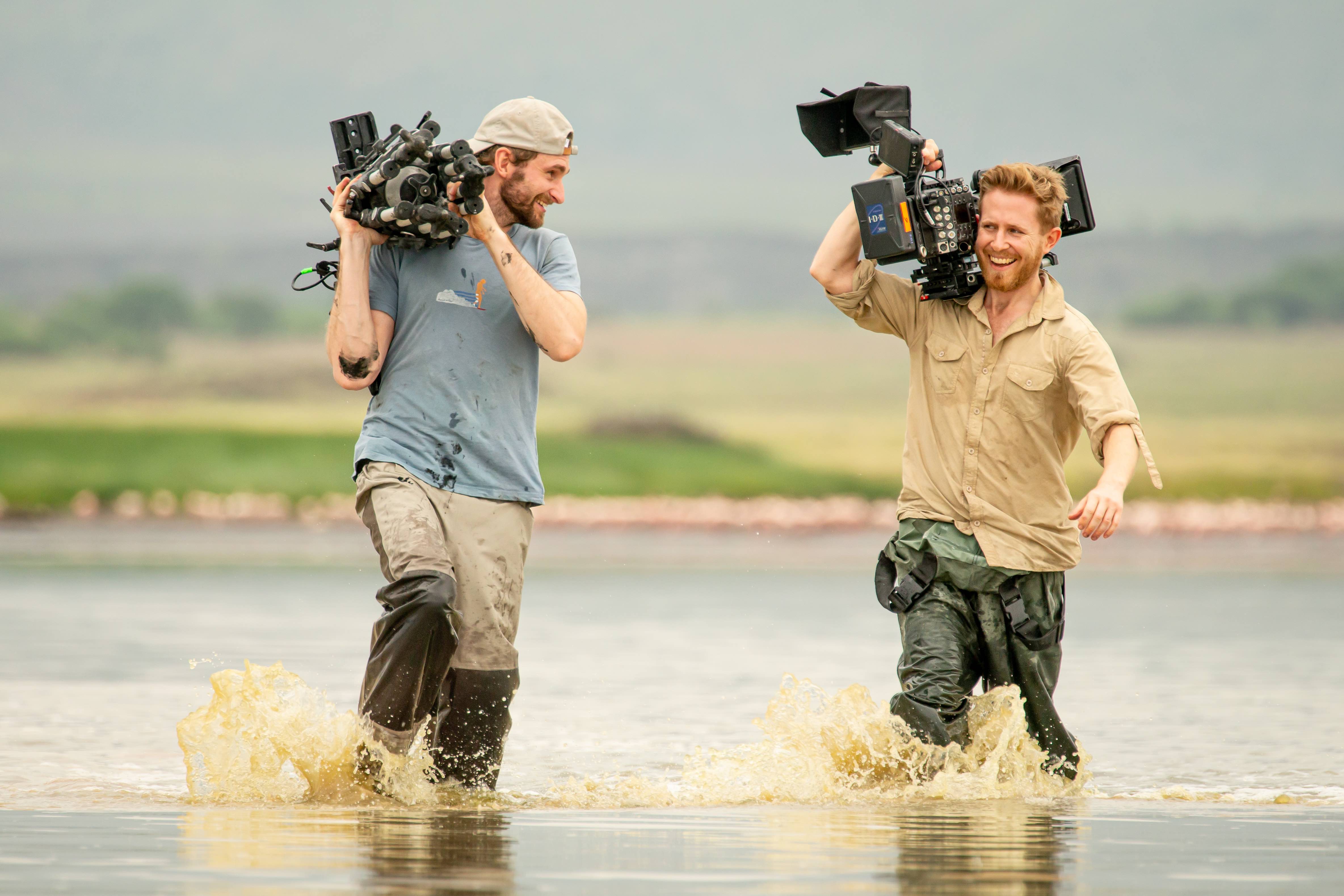
5. Network and Collaborate in the Wildlife Filmmaking Industry
Networking and collaboration are crucial to building a successful career in wildlife filmmaking. Establishing connections with like-minded individuals and industry professionals can lead to new opportunities, collaborations, and valuable learning experiences. There are various strategies to strengthen your networking and collaboration efforts.
Attending industry events, such as film festivals, conferences, workshops, and seminars focused on wildlife filmmaking, documentary production, or conservation, provides the chance to meet other filmmakers, producers, and industry professionals. You can learn about the latest trends, techniques, and challenges in the field while expanding your network.
Becoming an active member of online forums, social media groups, and networking platforms dedicated to wildlife filmmaking or documentary production allows you to engage in discussions, share your work, and seek advice from experienced professionals. These communities can also offer valuable information about job openings, funding opportunities, and industry news.
Working with other aspiring or established filmmakers on joint projects can help you expand your skill set, gain new perspectives, and build a network of contacts who share your passion for wildlife filmmaking. This type of collaboration can lead to growth in your career and open up new opportunities.
Building relationships with mentors is another essential aspect of networking. Reaching out to experienced wildlife filmmakers or industry professionals for guidance and advice can provide invaluable insights, feedback, and support as you navigate the challenges of building a career in wildlife filmmaking.
Maintaining your professional network is an ongoing process. It's essential to stay in touch with the connections you make, share updates about your work, and show genuine interest in their projects and achievements. A strong professional network can be a powerful resource throughout your career, helping you access new opportunities and stay informed about industry developments.
It’s important to be open to feedback and learning. Networking is not just about making connections; it's also about learning from others and growing as a filmmaker. Embrace opportunities to learn from your peers and mentors, and apply those lessons to your own work. Actively networking and collaborating with others in the wildlife filmmaking community will enhance your skills, access new opportunities, and build lasting professional relationships that support your career growth and success.
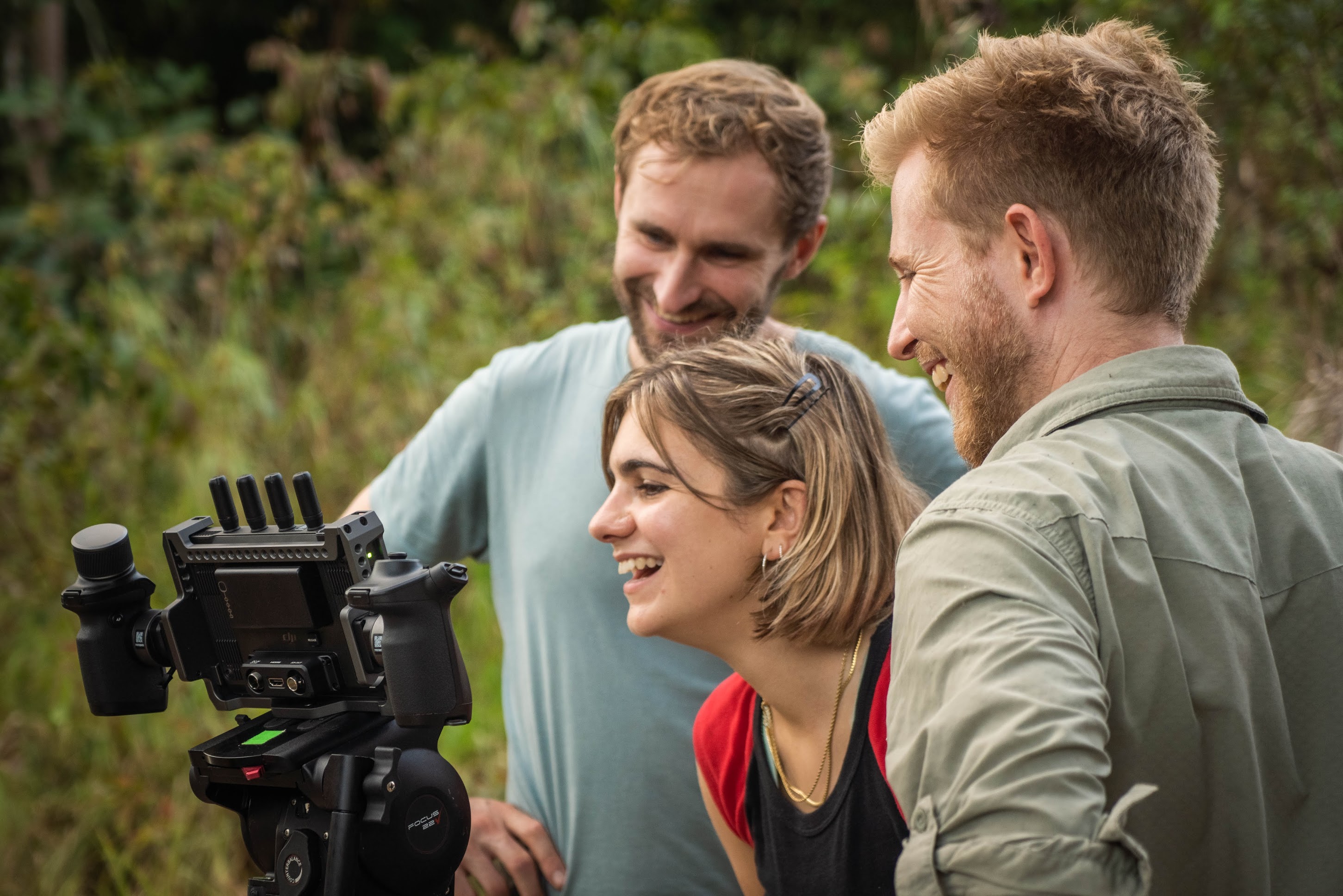
6. Pitch Your Wildlife Film Ideas and Find Funding (Optional)
Once you have built a solid portfolio and established a strong professional network - if you're wanting to - you are in a better position to pitch your own documentary ideas to production companies or seek funding through grants and crowdfunding campaigns. Developing a compelling pitch is crucial to garnering interest and support for your project.
Here are some key elements to include in your pitch:
- Synopsis: Provide a concise overview of your documentary idea, including the main topic, themes, and objectives. This should give potential investors or collaborators a clear understanding of what your project is about and why it is important. Make sure your synopsis is engaging and highlights the unique aspects of your story.
- Treatment: A treatment is a more detailed document that outlines your documentary's structure, narrative arc, and visual style. It should include information about your intended approach to storytelling, the characters or subjects you plan to feature, and the overall look and feel of the film. A well-crafted treatment will help convey your vision for the project and demonstrate your ability to bring the story to life. I've put together a free documentary treatment template that you can access here: Get your free documentary filmmaking treatment
- Budget: Prepare a detailed budget that outlines the costs associated with producing your documentary, including equipment, travel, crew, post-production, and marketing expenses. Be realistic and thorough in your estimations, and consider including contingency funds for unforeseen expenses. A comprehensive budget will show potential funders that you have carefully considered the financial aspects of your project and are prepared to manage resources effectively.
- Showcase previous work: Use your portfolio and showreel to demonstrate your skills and experience as a wildlife filmmaker. Highlight relevant projects that showcase your ability to capture compelling wildlife footage, your understanding of animal behavior, and your unique vision as a filmmaker. This will help build credibility and trust with potential investors or collaborators.
- Explain the project's uniqueness and relevance: Clearly articulate why your documentary idea stands out from other wildlife films and why it is relevant in today's world. This might involve highlighting a unique perspective on an environmental issue, presenting a previously untold story, or showcasing rare animal behaviors. Emphasising the uniqueness and relevance of your project will help capture the interest of potential funders and collaborators.
- Persistence and adaptability: Be prepared to face rejections or requests for revisions as you pitch your project to various production companies, grant organisations, or crowdfunding platforms. Remain persistent and be open to adapting your pitch based on feedback received. This will demonstrate your commitment to the project and your willingness to collaborate and refine your ideas.
By developing a compelling pitch that includes a clear synopsis, detailed treatment, realistic budget, and evidence of your previous work, you can effectively communicate the unique and relevant aspects of your wildlife documentary idea. This approach will increase your chances of securing funding or collaboration opportunities, allowing you to bring your vision to life.
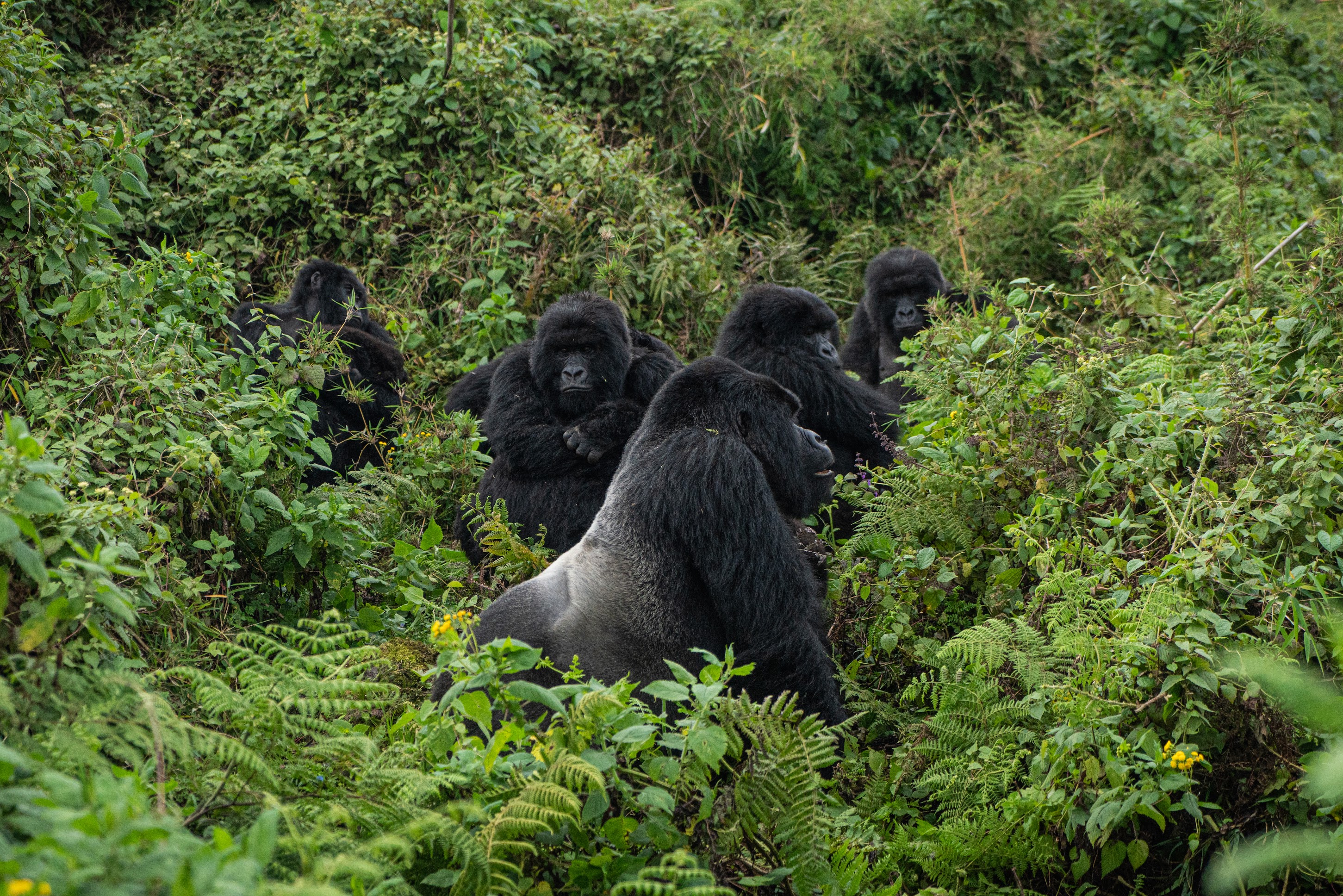
7. Stay Persistent and Keep Learning About Wildlife Filmmaking
Embarking on the journey to becoming a successful wildlife filmmaker is no easy feat, as the field is highly competitive and filled with challenges and setbacks. Persistence is crucial in overcoming obstacles and achieving your goals.
To maintain persistence and continue learning throughout your career, consider the following suggestions:
- Embrace failure as a natural part of the learning process. Use setbacks and mistakes as opportunities to learn and improve your work. Break down your long-term objectives into smaller, achievable milestones to stay focused and motivated, even when progress seems slow.
- Continuously seek out new knowledge and experiences. Attend workshops, conferences, and industry events to stay informed about the latest trends, technologies, and techniques in wildlife filmmaking. This will help you remain at the forefront of the field and adapt to its ever-evolving landscape.
- Connecting with experienced professionals and finding a mentor can provide invaluable guidance, advice, and support as you navigate the challenges of pursuing a career in wildlife filmmaking. Developing mental and emotional resilience is also essential to cope with the demanding and often unpredictable nature of the industry. Practice self-care, maintain a healthy work-life balance, and seek support from friends, family, and colleagues when needed.

What is a Blue Chip Documentary?
A "blue chip documentary" is a term often used to describe a high-quality documentary film that focuses on nature, wildlife, or other non-fiction subjects with a broad appeal. These documentaries are characterised by their exceptional production value, featuring stunning cinematography, compelling storytelling, and often a deep dive into the intricacies of the natural world. Blue chip documentaries are typically produced to be evergreen content, meaning they remain relevant and engaging to audiences over time, much like a blue chip stock is considered a reliable and valuable investment. They are often the result of extensive research and significant investment in terms of time and resources, involving skilled teams who may spend years in the field capturing the beauty and drama of the planet's ecosystems and wildlife. Broadcasters like the BBC, with its renowned Natural History Unit, have been instrumental in bringing these captivating and educational films to a global audience. Through their ability to inform, inspire, and entertain, blue chip documentaries play a crucial role in raising awareness about environmental and conservation issues, making complex subjects accessible and fascinating to viewers around the world.
What Qualifications Do Wildlife Filmmakers Need?
Qualifications for wildlife filmmakers can vary significantly, with an emphasis on practical experience, a passion for nature, and storytelling prowess over formal education. Whilst a degree in wildlife biology, environmental science, or a related field can offer a foundational understanding of ecological principles and animal behaviour, it's not strictly necessary. What's crucial is a deep appreciation for the natural world, coupled with technical skills in camera work and editing. Gaining hands-on experience through internships, volunteering with conservation projects, or working alongside experienced filmmakers can be invaluable. Proficiency in navigating various filming equipment and software, along with a flair for creative storytelling and patience in capturing wildlife in their natural habitats, are essential. Certifications in specialised areas like first aid, scuba diving, or wilderness survival can also enhance a filmmaker's qualifications, especially for projects that involve working in challenging environments.
Wildlife Filmmaking Gear: Essential Equipment for Beginners
For beginners keen to start in wildlife filmmaking, it’s important to focus on the essentials without spending a fortune. A reliable DSLR or mirrorless camera that offers high-definition video capture is an excellent initial investment. These cameras are not only versatile but often include features tailored for capturing the beauty of wildlife in detail. A sturdy tripod is crucial for keeping your shots steady, especially when waiting for wildlife to make an appearance. Adding a telephoto lens to your kit can greatly improve your ability to capture detailed shots from a distance, ensuring you don’t disturb the natural behaviour of animals. Also, a basic external microphone can enhance the quality of your sound recordings, capturing the ambient sounds of nature that are as important as the visuals. Waterproof and dustproof camera bags or covers are essential for protecting your equipment from the elements, a common challenge when filming outdoors. Finally, a simple pair of binoculars will aid in spotting wildlife and observing their behaviour before filming. This beginner’s kit will place you on the right path, allowing you to learn and evolve in the realm of wildlife filmmaking.
How to Edit Wildlife Footage: Tips and Tricks
Editing wildlife footage requires a blend of technical skill and storytelling flair. Start by organising your clips, categorising them by species, behaviour, or location to streamline the editing process. Using professional editing software, you can then begin crafting your narrative. Pay close attention to pacing, ensuring that your edit captures the rhythm of the natural world; sometimes, slower sequences can highlight the beauty of wildlife, while quicker cuts may convey the urgency of a chase. Colour correction is crucial in bringing out the true vibrancy of the footage, making scenes more engaging. Incorporating natural sounds recorded during filming can enhance authenticity, but be mindful of the audio levels to ensure clarity. Overlaying voiceover or text can provide context and enrich the story, but it should complement the visuals rather than overwhelm them. Experiment with different transitions and effects sparingly, focusing on enhancing the natural beauty rather than detracting from it. Lastly, feedback from peers can offer new perspectives and help refine your final piece, turning raw footage into a compelling wildlife documentary.
Best Places to Film Wildlife: Top Locations for Wildlife Videography
For wildlife videographers seeking the perfect backdrop to capture the natural world’s raw beauty, several locations around the globe stand out as top choices. Africa's Serengeti National Park is renowned for its spectacular great migration, offering unparalleled opportunities to film vast herds of wildebeest and zebra. The Galápagos Islands provide a unique chance to document diverse and endemic species, from giant tortoises to marine iguanas, in their pristine habitats. Borneo's dense rainforests are a haven for capturing elusive primates like orangutans and proboscis monkeys. The Arctic regions of Norway and Canada offer breathtaking scenes of polar bears, Arctic foxes, and whales against stunning icy landscapes. Meanwhile, Costa Rica’s lush rainforests and rich biodiversity make it a hotspot for filming vibrant birdlife and other tropical creatures. These destinations not only offer incredible wildlife encounters but also emphasise the importance of conservation in preserving these extraordinary environments. However, despite these amazing locations, the best place to film wildlife, especially when you're starting out, is whatever you have access to, whether that's filming bees in your back garden or deer in a local park. You can hone your skills here, and it's amazing what you'll find when you spend the time looking, even if you're in the center of a city. Nature is all around us.
Wildlife Filmmaking Ethics: Essential Tips for Respectful Filming
Wildlife filmmaking is a powerful medium to showcase the beauty and complexity of nature, but it comes with a significant responsibility. Ensuring ethical practices during filming is crucial to protect the well-being of animals and their habitats. Respectful wildlife filmmaking involves minimising human impact, avoiding disturbance of natural behaviors, and adhering to strict guidelines that prioritise the animals' safety over getting the perfect shot. Filmmakers should educate themselves about the species they are documenting, maintain a safe and respectful distance, and use technology, like long lenses and remote cameras, to capture footage without intruding. By following these essential tips, filmmakers can create stunning, impactful content while preserving the integrity of the wildlife they aim to celebrate and protect.
Wildlife Filmmaking: Knowledge for Conservation Impact
As a wildlife filmmaker or cinematographer, it's vital to stay informed about the latest conservation issues and scientific discoveries related to your subjects. This knowledge will enable you to create relevant and timely documentaries that positively impact wildlife and their habitats.
By remaining persistent and committed to learning, you'll continue to grow as a wildlife filmmaker and overcome the challenges you encounter. Each experience, whether positive or negative, offers an opportunity for growth and brings you closer to achieving your goals in this rewarding and inspiring career.
Photos taken by Hamza Yassin & Duncan Parker.
















